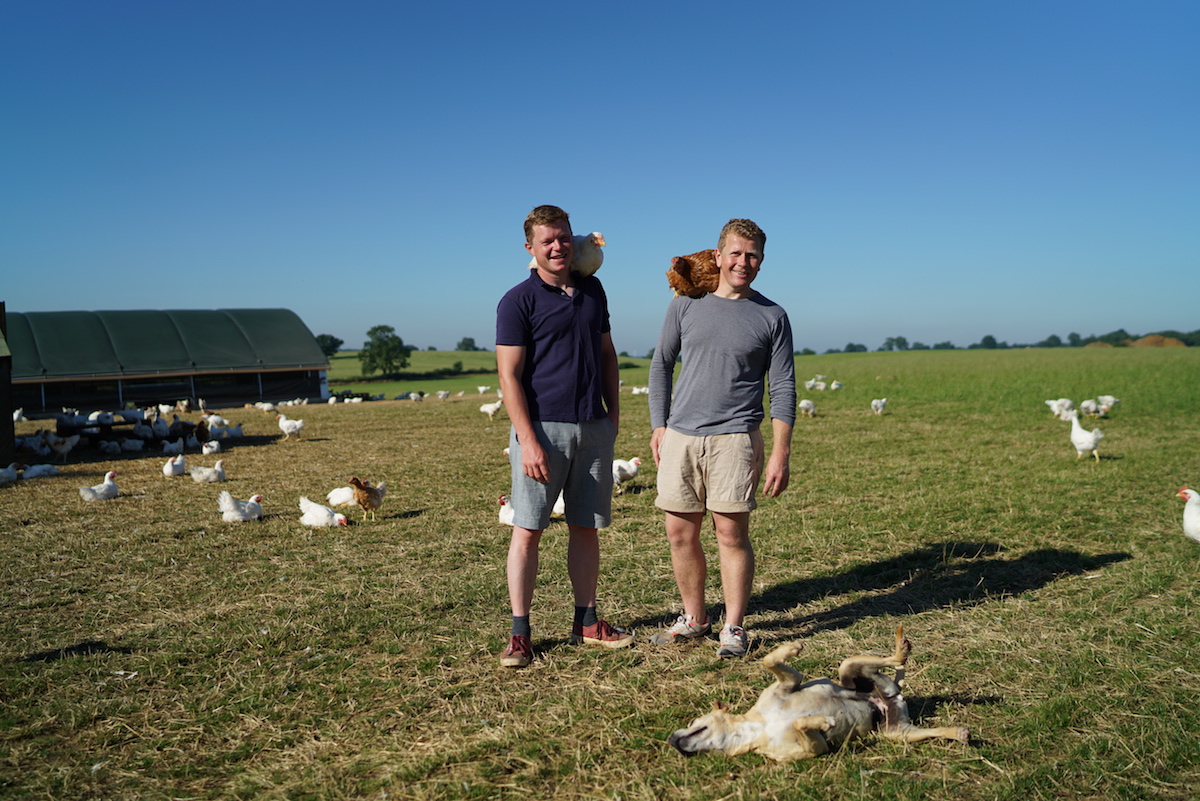Over the last few months I’ve been out and about with my camera profiling some of the small independent farmers and foodmakers who supply Farmdrop – a local food business on a mission to fix the food chain. In the first of the series I meet chicken farmers Nick Ball and Jacob Sykes at Fosse Meadows in Leicestershire to find out more about their slow grown chicken enterprise.
What’s the history of the farm and the business as it is today?
It all started seven years ago. We gave up our city jobs (I was a fashion designer and Jacob was a property developer) and together we set up the chicken farm on my Dad’s farm for six years. We then moved to the council farm here near Lutterworth about a year ago. It’s an independent business with family ties and links.
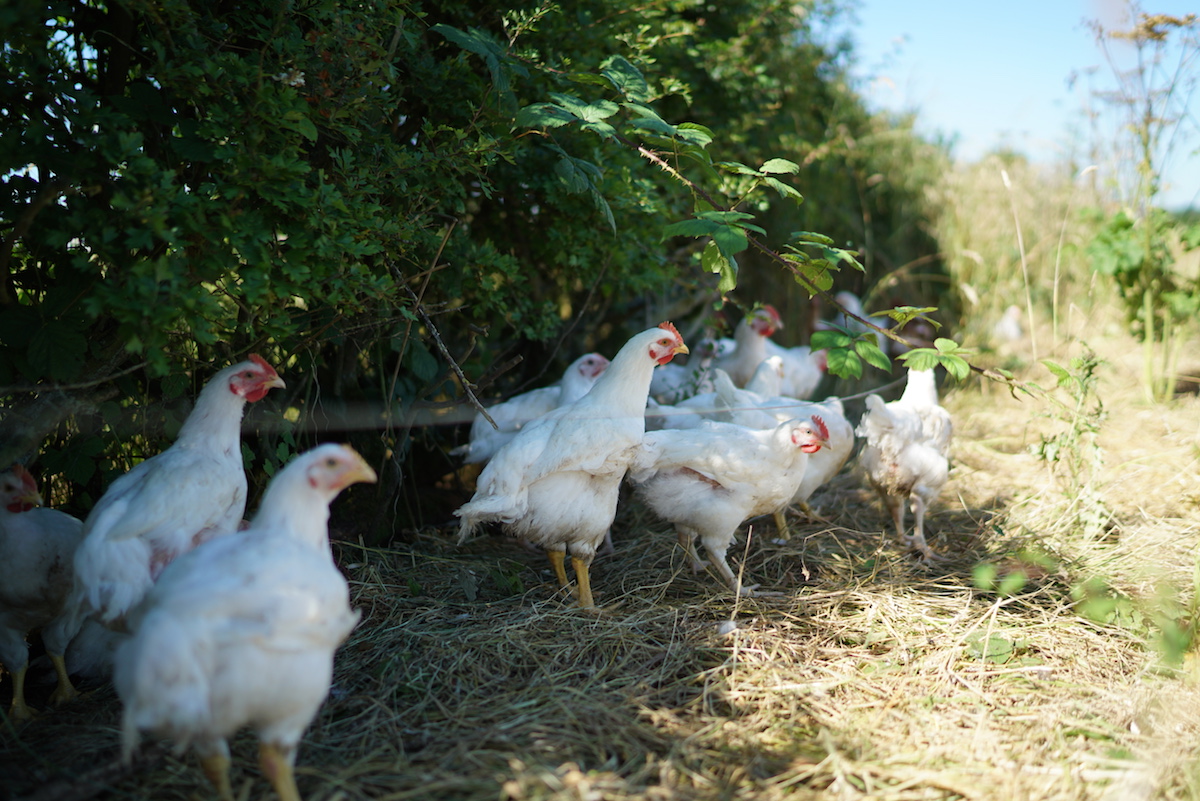
Why did you setup Fosse Meadows?
We started the company because of our love of good food. I’m a fourth generation farmer so it ticked lots of boxes for both of us. We wanted to do something out of the norm – something that will keep us working 12 hours a day 7 days a week for a long time!
What do you produce?
We produce fabulous chicken, turkeys and geese. The difference with us is that we grow our birds for longer, so they take on more texture and taste with an incredible flavour.
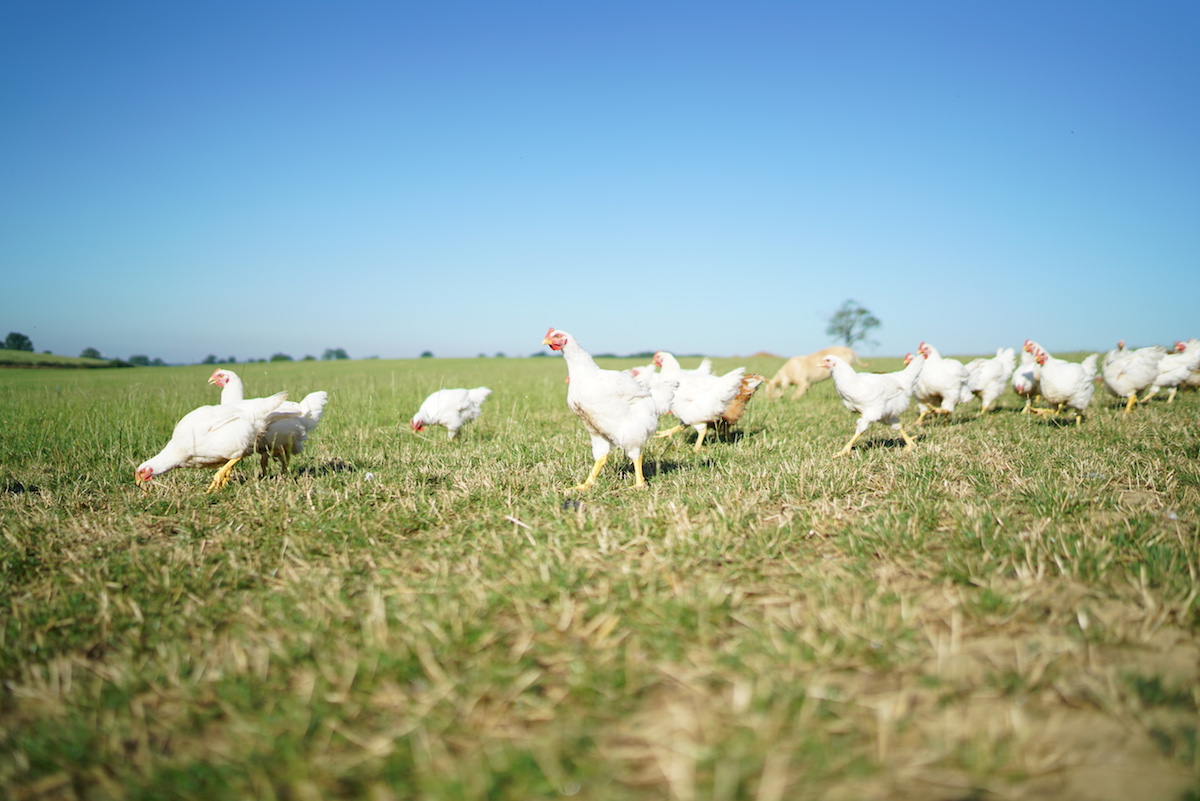
What do you love about Farmdrop?
It gives us another outlet to reach a wider audience rather than just our farmers’ markets. We’re right behind the ethos of supporting the artisan farmer. Farmdrop are selective in who they work with and it’s a transparent business – you know what you’re getting as a customer and as a producer too. We also love being able to sell online. Although it sounds simple, doing this ourselves would be a huge amount of work and cost on top of doing everything else on the farm. Farmdrop makes it really simple for us to get our products direct to customers who want that level of convenience with confidence in the produce they eat.
Tell us more about your methods of production:
In essence it’s an organic production system: all the sheds are mobile and the stocking densities (the number of livestock in a unit area) are low. There are no fences – our birds can go where they like. They like a hedge! They have as much outside roaming space as they want and they get that from morning to dusk. We also grow our birds for longer than most organic systems and as a result we use non-organic certified feed and straw bedding as it wouldn’t be economically viable to do so on the scale we’re at. Our farming practices are the same as organic in every other way that we have small flocks, moveable sheds, and we don’t put any fertilisers or pesticides onto the grass. We don’t put any antibiotics into their feeds unless prescribed by a vet for welfare reasons (which is very very rare).
What else should we know about how the birds are reared?
At Fosse Meadows we grow our birds for longer than organic standards. We give them a natural no additive feed with no antibiotics given as standard. We are using chicks from France which have a much more elongated breast and bigger legs – this means they roam further and you get much better quality meat. Because they can roam, they are not these short little legged chickens with enormous breasts which can’t really move anywhere, which is what you find in the supermarkets.
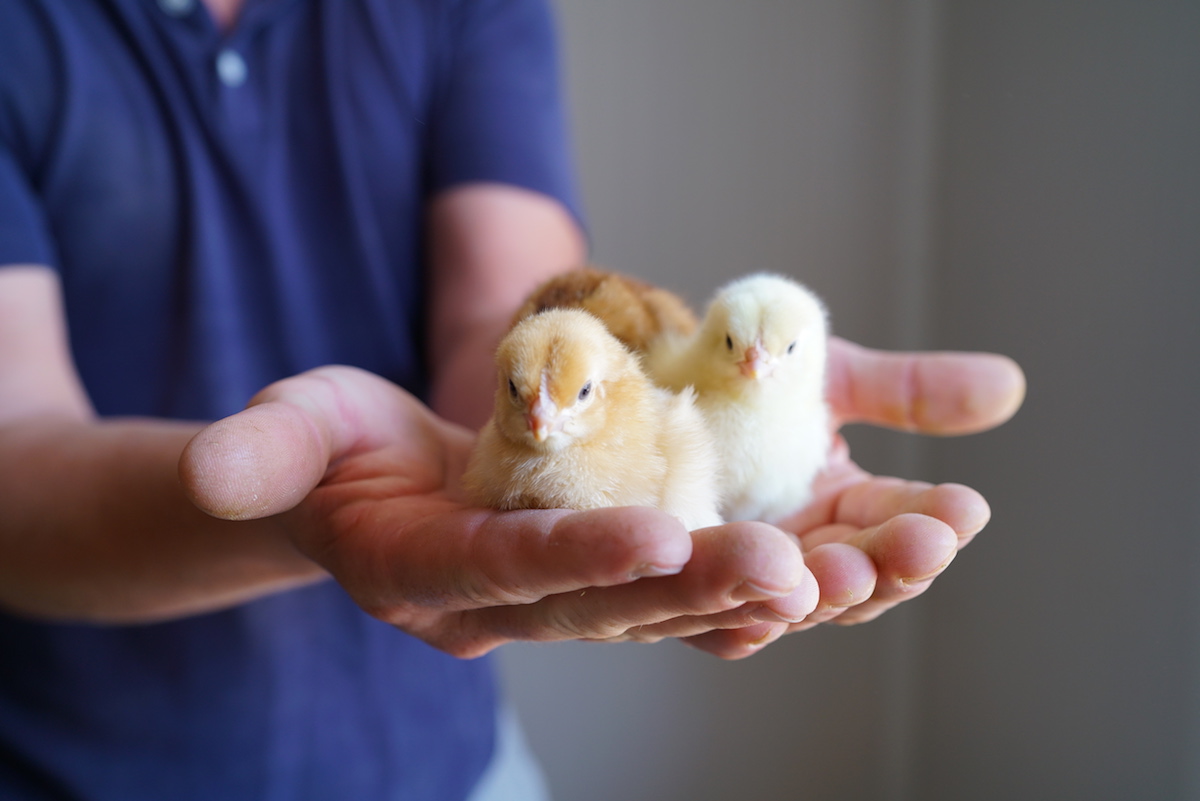
Can you talk us through the life-cycle process of your chickens and turkeys?
The chicks arrive every two weeks (we saw 3000 arrive today). We then grow them for three to four weeks under brooding (heat) lamps in a barn. We then bring down the temperature to get them acclimatised to going outside. At three to four weeks we take them outside to a mobile shed which has been moved onto fresh pasture and they live for the next eight weeks or so out in the field – closed up at night to keep them safe from Mr Fox. But essentially they are free to roam and to do what chickens wish to do and then they go for slaughter around 81 days old (12 weeks) – where 1,500 are collected from the farm every Monday to go to the slaughter house and processors ready for sale to our customers.
The turkey chicks arrive on the farm as day-olds again and are under heat lamps for four to five weeks and will go out at around six weeks into the field and until a few weeks before Christmas (the ones you saw on the farm today were 2.5 weeks old).
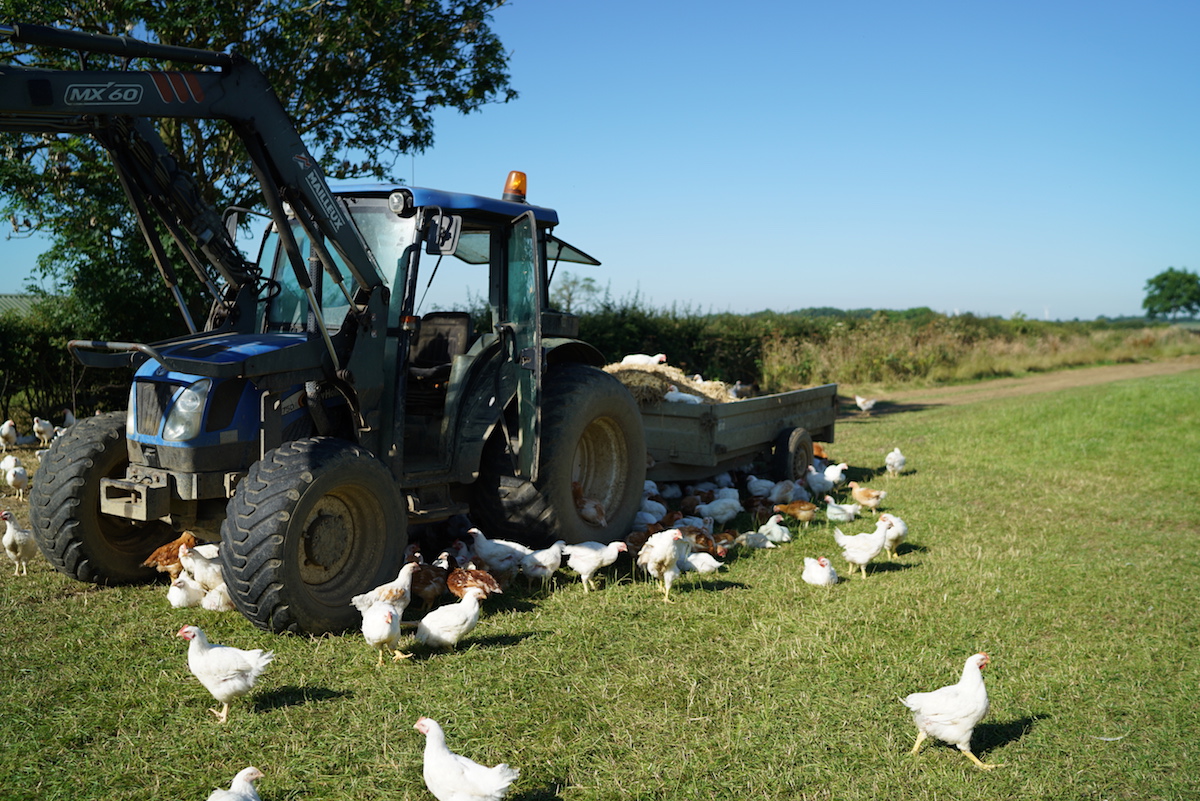
Can you tell us the difference between your bog standard supermarket free-range chicken and the slow grown chicken you rear here – in terms of health and taste?
We use a different bird for a start. We’re using a slow growing bird, which means they roam further and they don’t just sit and eat all day. They sit, eat, drink, get up, walk around, go outside and sit in the sunshine. Your supermarket free range chickens won’t be doing these things because their legs aren’t strong enough. The supermarkets will have plenty to say to make out the opposite – that they do have strong enough legs and they’ll have passed all the tests. For example, they’ll state they have ‘slow grown bird’ – which will have been grown a day older than non-slow grown birds. They will have slow growing breeds which are designed to grow a day longer than their normal birds on the basis that it is now a day older they can call it a slow grown bird – the legal limits.
In terms of end taste, with our birds you’ll get a much thicker skin and you’ll have a much better fat content and there will be lots of flavour in that fat. We’re trying to emulate the great Label Rouge chicken of France, known for their great chicken practices. When our customers finish eating our chicken and decide to make some stock or broth they notice that the bones are much stronger – they’ve developed and so you can’t just snap them in your fingers – which means there’s more nutrients and minerals in those bones, which gives a much better stock and a lovely jelly. The meat is also totally different. It’s a lot firmer and has more structure. You need less meat to fill you up compared to supermarket chicken.
What breeds do you have?
Gladys – she’s my favourite! No, only joking. They are Hubbard birds. We use 3 different strains of Hubbard bird and they are known as a Cotswold White and a Cotswold Gold. It doesn’t mean they are from the Cotswolds, it just a way of distinguishing them.
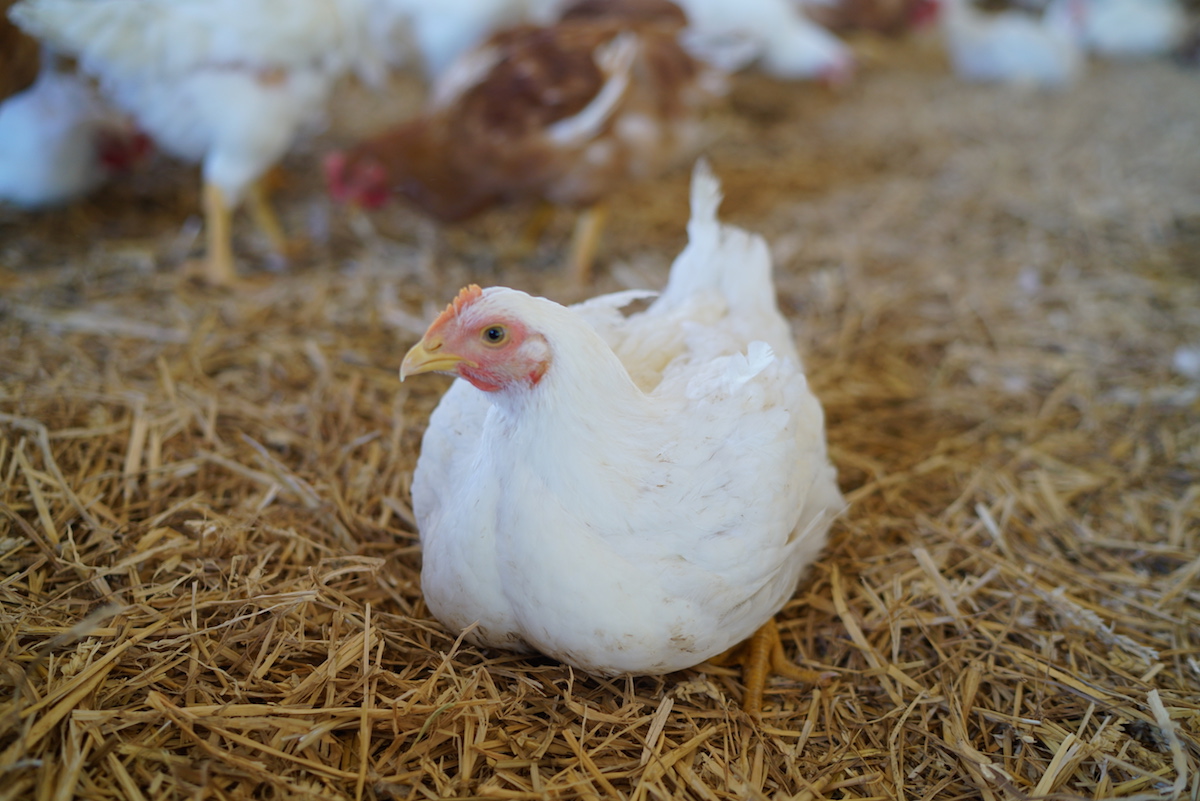
Tell us about your turkeys:
Our turkeys are slow-growing birds grown for six months – this is about twice as long as the turkeys sold at supermarkets at Christmas time. With our birds you get a great fat content that runs through the meat so it stays lovely and succulent. None of this dry turkey! The breed is a Bronze bird (they come from the breeders Farmgate Hatcheries) and they are the same birds as a Kelly Bronze which are based on the American wild turkey.
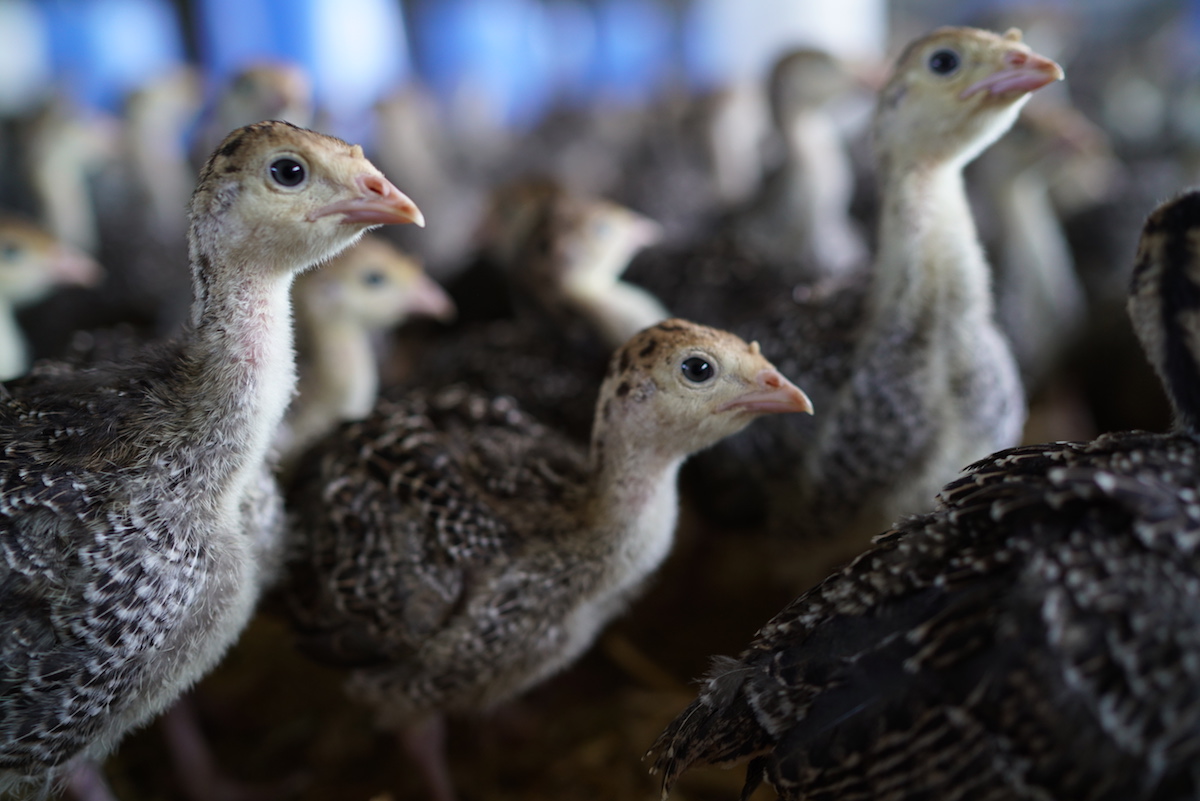
How about the cockerels?
The cockerels are the same breeds as our chickens and we grow them to 81 days. We’ll grow some of them on for another 6 to 8 weeks for even more flavour. The texture of cockerel is more-meaty – it’s going towards more lamb or beef.
And the geese?
They are kind of a special occasion thing. Again slow-grown, additive-free and reared on home grown wheat and grass . With it’s rich, dark meat, they’re a little like the cows of the bird world.
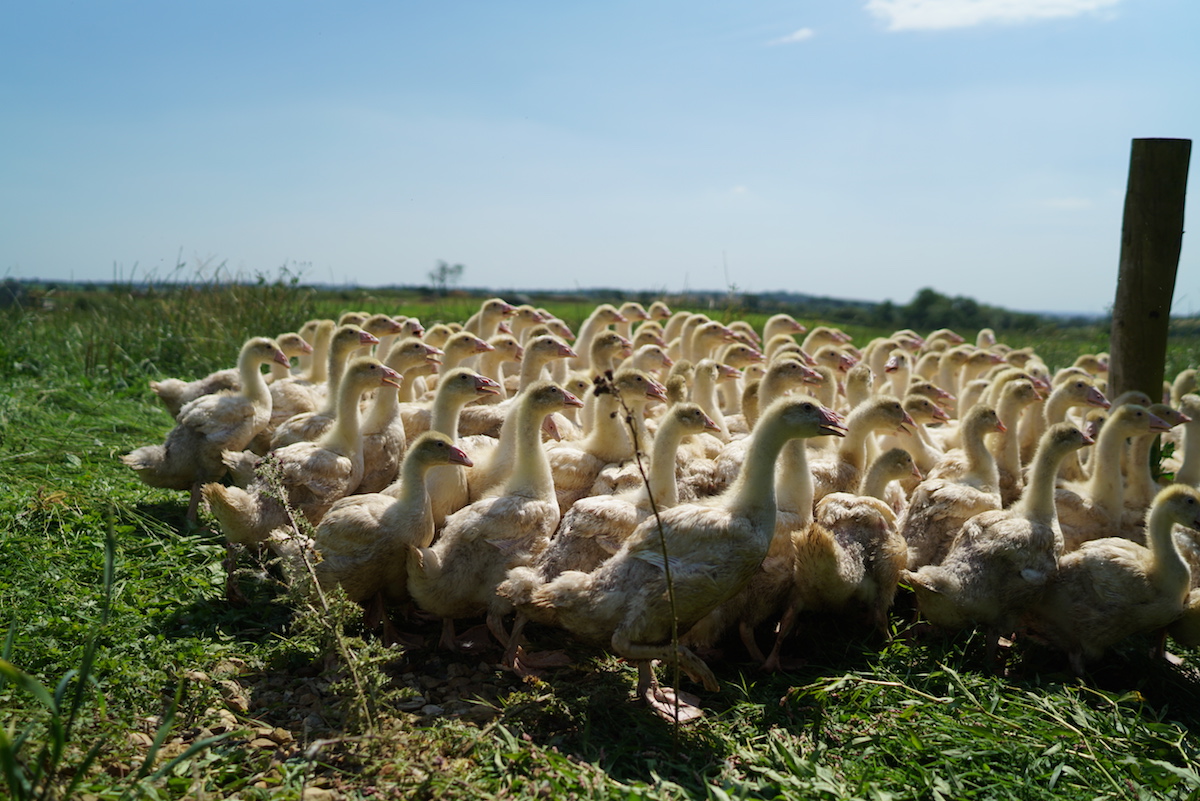
The world would be a tastier place if…
If everyone, when dining out, asked if it was a free range chicken and if it wasn’t refuse to eat it. Too often you go into a restaurant and they don’t care about the ingredients. I always make a point of asking to get people thinking.
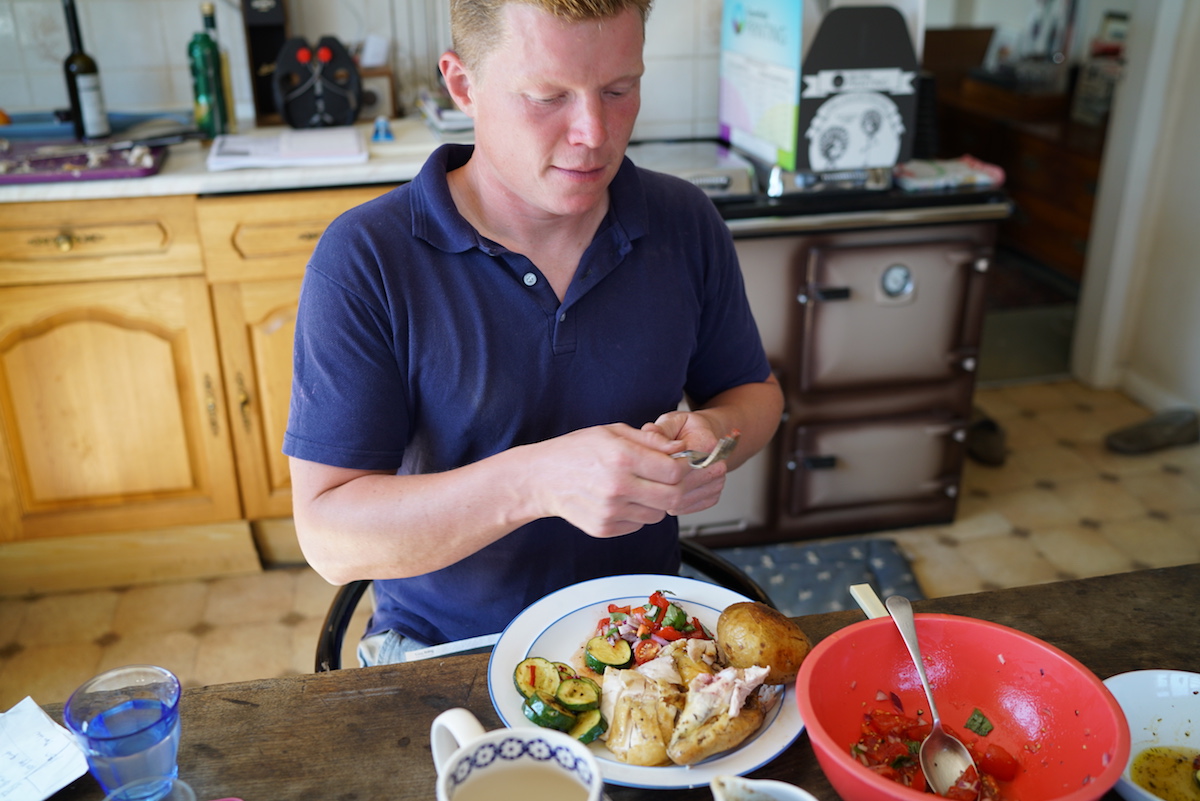
When you’re not working…
Working. Gardening. Driving down to London (A holiday from the farm). Once upon a time we were playing tennis – which we’ll try and resurrect at some point.
Best kept farming secret…do you sing to your turkeys?
We’ll talk to the turkeys and we’ll talk to the geese – because they’ll respond. They like to be talked to and the turkeys talk back. Chickens don’t seem too bothered either way!
More Information
See all of Fosse Meadows’ delicious slow-grown poultry on the Farmdrop shop.
Farmdrop are on a mission to fix the food chain and believe the way mass-produced food is made and distributed is all wrong. They deliver fresh, delicious food from local farmers and foodmakers to your door and because you’re buying direct, producers also get a much better deal.
A version of this article first appeared on the Farmdrop blog here.
To stay up to date with the latest Indie Farmer stories follow and like us on facebook, twitter and instagram.



